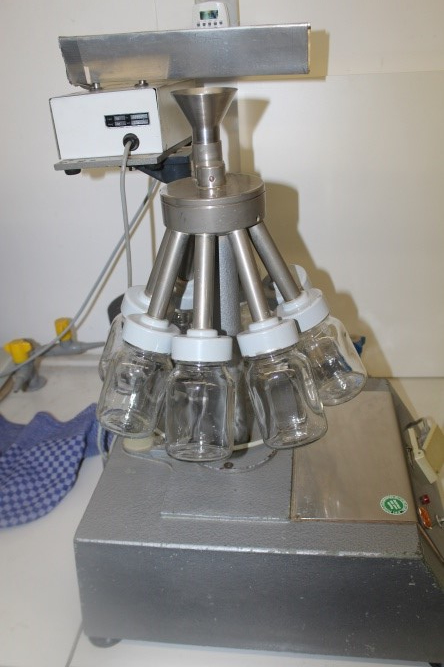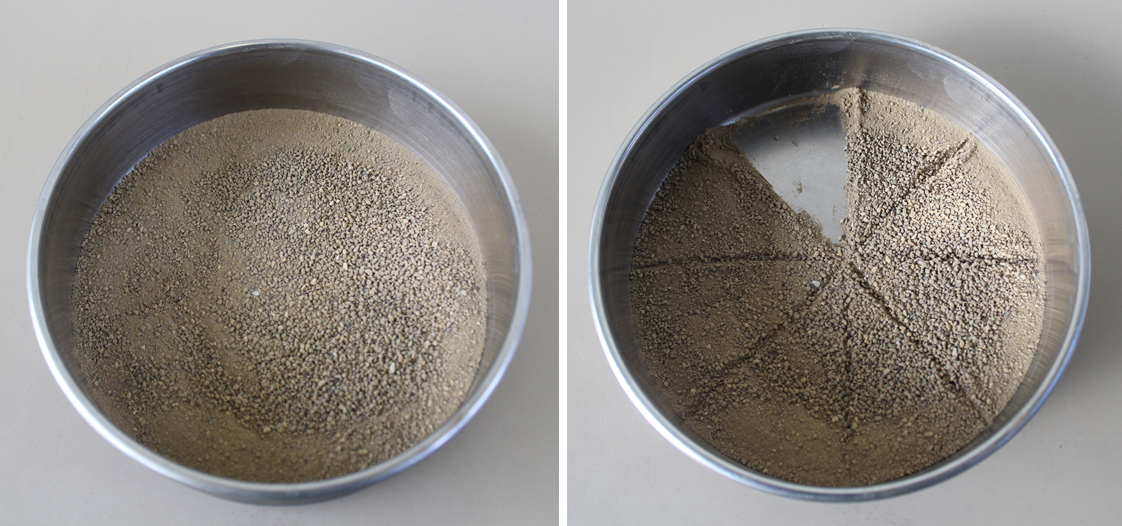Subsampling
Most fractionation methods are time consuming, for which the total number of samples is attempted to be minimized. To produce meaningful datasets, i.e. to investigate different depth increments, gradients in land-use, management or abiotic site factors and to account for field scale variability, the number of soil samples is usually not below several dozens. Laboratory replicates, which would directly inflate the number of samples, are thus often neglected. Especially in such a case of no or low laboratory replication, it is important to assure that the sample that is ultimately fractionated is well representing the total sample, which is usually of a larger volume and often used for complementary analysis. For example, the C content of the bulk soil is used to calculate a recovery rate by adding up C fractions. Ideally, the C content of the fractionated sample should thus be equal to the C content of the bulk soil. Deriving representative subsamples is therefore an important first step of any fractionation attempt.
Soils are heterogeneous media with varying particle sizes and densities, leading to a stratified sedimentation in any kind of vessel. Usually, fine particles sediment at the bottom, while coarse particles are found on top. Taking just ordinary spoons to subsample a sample or pouring soil from one vessel to the other bares the risk of a first, unintentional and undesired fractionation step.
The most accurate and state of the art solution to this problem is using a rotating sample divider, as shown on the picture on the right. However, also rifle splitting can be conducted, with the device being less expensive.
If a sample splitter is not available, manual sample splitting can be applied. This might be less accurate, but will improve the representativeness as compared to careless subsampling. Ideally, the sample is homogeneously spread in a round and flat vessel by gentle shaking. Thereby, coarse particles should be “floating” and fine particles accumulate at the bottom. Stratification might occur not only from top to bottom, but potentially also from center to rim. Thus, the most accurate method to subsample is to divide the spread sample like a cake into ~8 samples and sample 1-2 of the separated pieces completely.
If more than one piece is taken, the pieces should not be directly adjacent to each other. Repetition, i.e. taking one piece, spreading and dividing the rest of the sample again and taking the next piece, will improve the result. The size of the pieces can finally be carefully enlarged to adjust to the desired mass of subsample. The most problematic soils with regard to deriving a representative subsample are coarse textured soils, in which a large proportion of total SOC is stored as particulate organic matter. The probability that such relatively large and undecomposed plant tissues distribute completely equally across all subsamples is small, even if a professional sample splitter is used.

